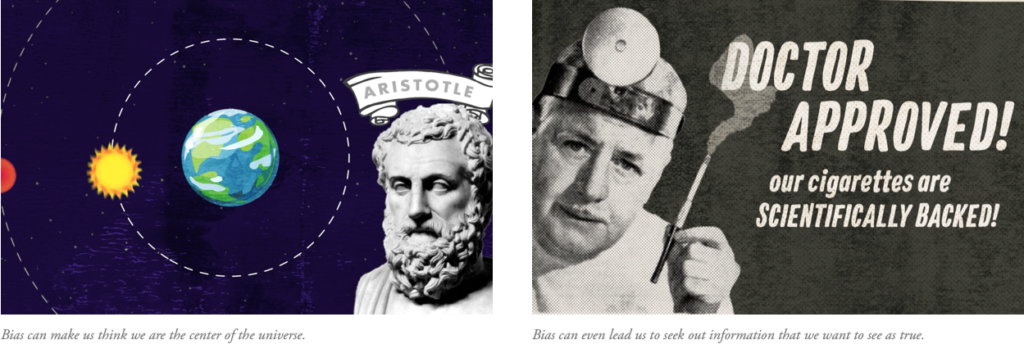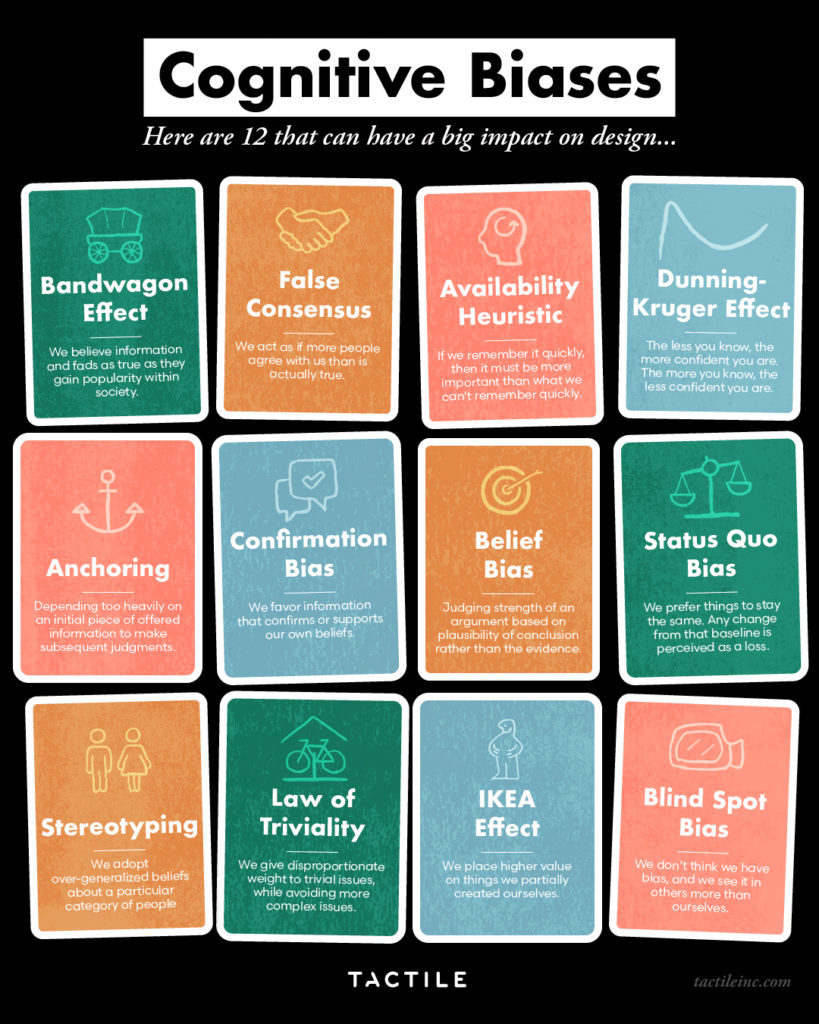Biologic Shortcuts
Our relationship with bias could use a bit of untangling. Well, what is it exactly? Bias is a word that can run the gamut from lightly dismissing unwanted feedback (“they’re just biased”), to #fakenews, to flawed research that skews data towards a hypothesis. No matter how it’s used, it speaks to situations that are out of sync with rationality.
Simply speaking, cognitive bias means making decisions based on facts we’ve misinterpreted. It’s a deviation from rationality that causes a distortion in the way we observe the world — like cosmic Coke-bottle glasses. If that sounds like something you don’t suffer from, that’s actually a bias called “Blind Spot Bias” (recognizing bias in others, but not yourself). And the list of cognitive biases has continually grown and evolved over the last six decades.
Your brain has to filter through a lot of information on a daily basis. It gets lazy and takes shortcuts to make life “easier,” using pre-existing patterns to judge what’s important and ignore the rest. These shortcuts form the foundation of cognitive bias.
“The brain gets lazy and takes shortcuts in making judgements.”
Biologically these cognitive shortcuts actually help us make quicker decisions, ones in which the difference could be life or death. It’s the thing that makes us jump when hearing a starling sound in a dark alley. So it’s natural to have bias. But just accepting it as is can negatively affect our interactions with the world around us.

Why Bias Matters in Design
At Tactile, we design physical and digital tools, and if our team isn’t careful, this bias can negatively affect our work. Bias can lead us to only look for information we want to see (confirmation bias).
What makes a designer a designer is that we form opinions about how things should work. Sometimes that leads us to feel precious about our own ideas over another’s. Lean too far into that and an unhealthy ego will form, causing us to shoot down different perspectives too easily.
“Sometimes it’s good to be less efficient, because being efficient isn’t the same as being effective.”
Humans are also tribal creatures who band together to take on projects we couldn’t have done alone. When we do this, we tend to group up with those who use the same cognitive shortcuts. Meanwhile, if every group does this, diverse thinking starts to drop, and even diversity itself is seen as hampering efficiency. It’s the equivalent of a high school quad where freaks, geeks, popular kids, and “everyone else” each take to their own corner, never to cross an invisible line.
Choosing one side feels natural, because doubting ideas you’ve grown up with can create tension within yourself and with your tribe — aka going against the grain. Going with the grain does return a polished surface, but if your goal is a meaningful insight under the surface, it may get lost in a siloed workgroup. Sometimes it’s good to be less efficient, because being efficient isn’t the same as being effective.
At Tactile, exploring this tension is a part of a character trait we’re brewing into our culture and seek out. Sometimes it comes more naturally, and other times it requires a good amount of intentionality like any healthy relationship (especially in a year of remote work). This explorative approach starts with humility, with a process lead with open ears.
By acknowledging blind spots, we don’t charge into a conference room like we know everything already. We first step back, observe any implementation, and ask a lot of questions. When we don’t understand, we ask. When we share work, we appreciate hearing from everyone in the room, especially the quiet ones. All these voices come together to sharpen and point out what may still be missing. We think it’s tougher (and better) to first read a room than jump to a solution. Sometimes it’s a bit messy, but great ideas grow on common ground cultivated with diverse wisdom and experience.
We all like to be right, but it’s more important to get it right. And getting it right means lowering our defenses to address bias so that we can be open to new ideas. It also means deflating our ego, recognizing first impressions can be wrong. With this sort of humility, it’s easier to overcome bias.
…
In order to understand biases and their effect, it’s good to recognize them even in small instances. As I said, there are many. We’ve collected just a few here below that are worth noting in design.
In part 2 of this series on Cognitive Bias, we’ll share practical steps to overcome bias in design.
